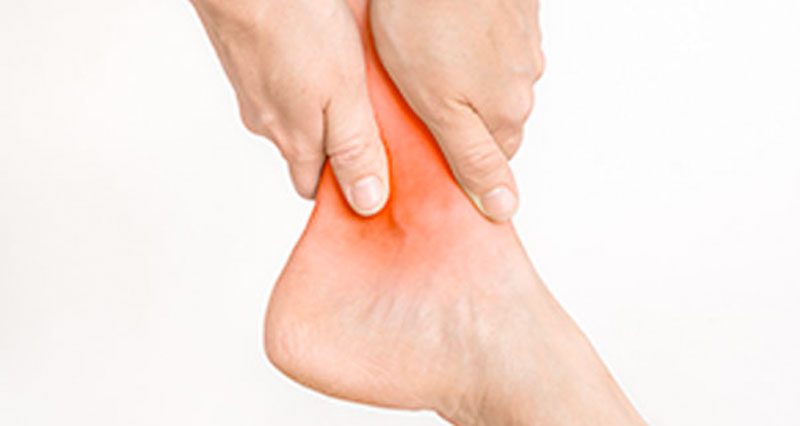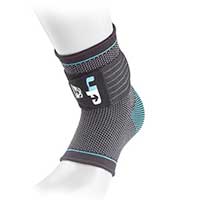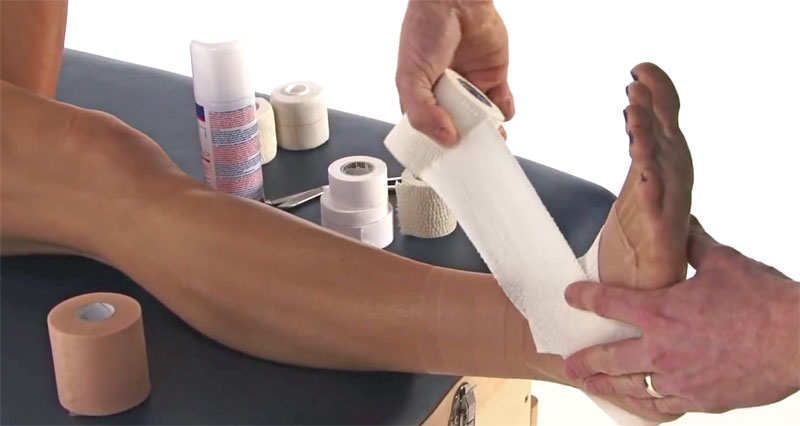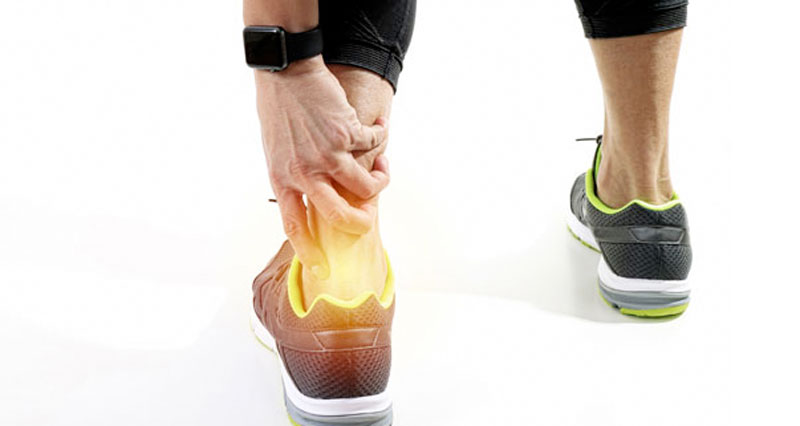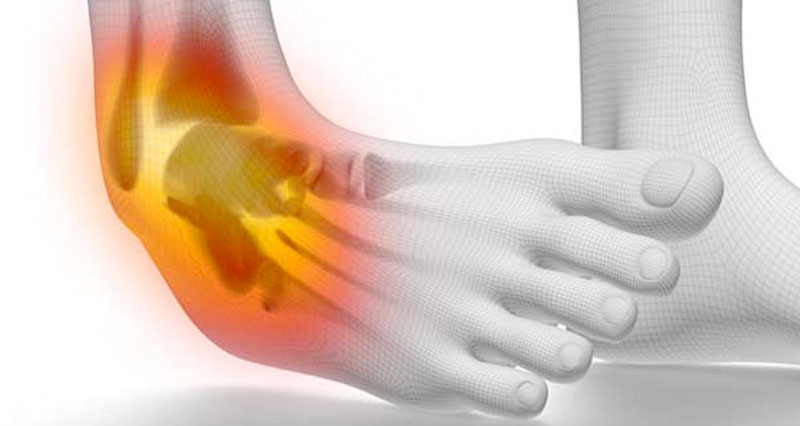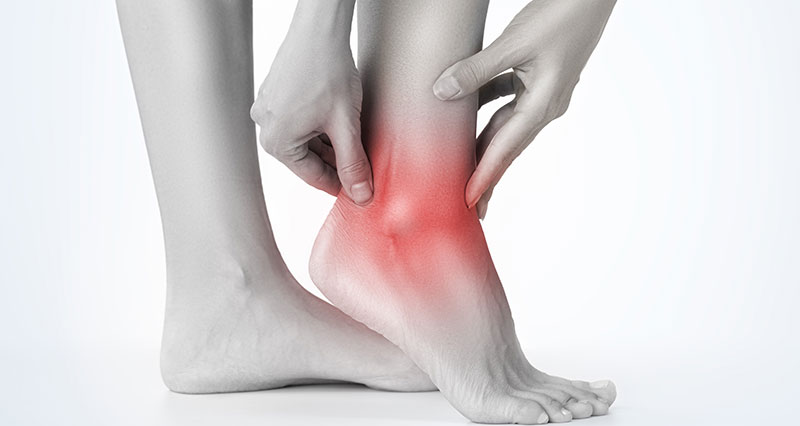Medial ankle pain refers to pain on the inside of the ankle. Chronic ankle pain develops gradually over time and includes tendonitis (tendinopathy), stress fractures and nerve related injuries. Acute medial ankle pain is sudden onset and includes sprains, strains & fractures.
Overuse/chronic medial ankle pain
The following injuries are common causes of pain on the inside of the ankle which occurs gradually over time.
Posterior tibial tendonitis
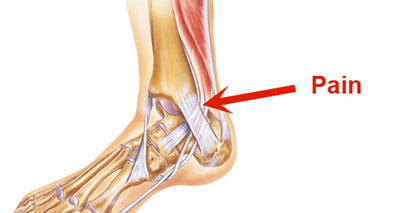
Tibialis posterior tendonitis or tendinopathy is one of the most common causes pain on the inside of the ankle, specifically under the medial malleolus (bony bit on inside of the ankle). Symptoms include:
- Gradual onset pain on the inside of your ankle
- Pain may also radiate under the arch of your foot
More on Posterior tibial tendonitis.
Flexor hallucis longus tendonitis
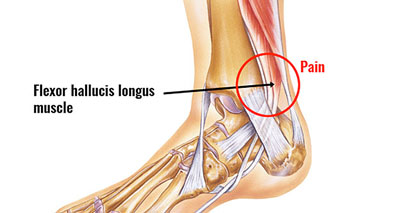
Flexor hallucis longus tendonitis or tendinopathy is inflammation, or more likely degeneration of the flexor tendons in the foot. Symptoms include:
- Pain on the inside of the ankle
- Specifically, pain along the length of the tendon around the back of the medial malleolus and into to the arch of the foot.
More on Flexor hallucis longus tendonitis.
Medial calaneal nerve entrapment
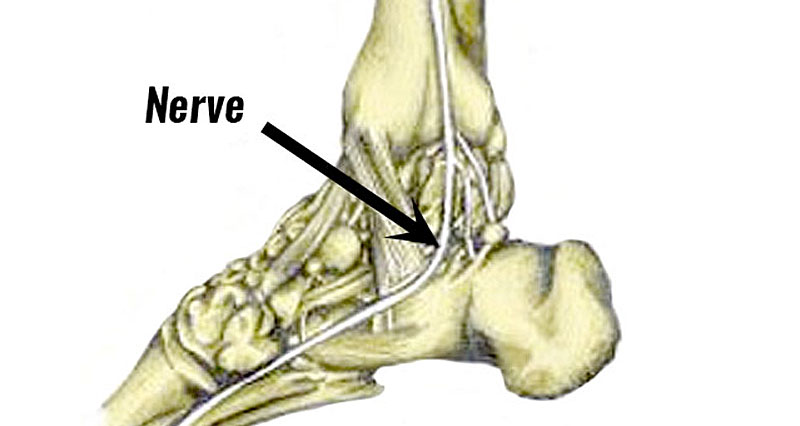
Medial calcaneal nerve entrapment has similar symptoms to tarsal tunnel syndrome consisting of:
- Burning pain below the medial malleolus on the inside of your ankle
- Pain may radiate under the sole into the arch of your foot
- Tenderness over the medial malleolus
- Symptoms often aggrevated with running
More on medial calcaneal nerve entrapment.
Tarsal Tunnel Syndrome
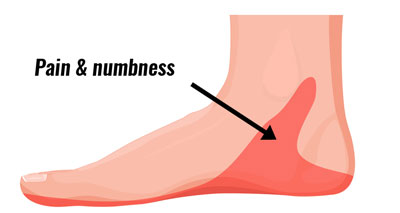
Tarsal tunnel syndrome is caused by pressure on the posterior tibial nerve as it passes on the inside of the ankle. Symptoms consist of:
- A burning pain in your heel which can radiate into the arch of your foot.
- The sole of your foot may feel numb, or your may experience pins and needles.
More on Tarsal Tunnel Syndrome.
Talar stress fracture
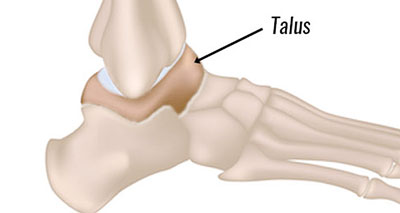
Talar stress fracture is a hairline break of the talus bone at the top of the ankle, which the tibia or shin bone sits on. Symptoms consist of
- Gradual onset pain on the outside of the ankle, but may also be felt on the inside
- Exercise makes symptoms worse, particularly running
- Pain eases with rest
More on Talar stress fracture.
Medial malleolar stress fracture
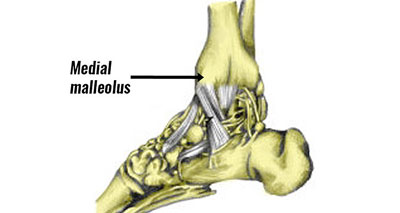
The medial malleolus is the bony bit on the inside of the ankle. A stress fracture of the medial malleolus can occur but is very rare2.
- It causes pain on the inside of the ankle which is exacerbated by activity, especially running and jumping activities.
- You will have specific point tenderness over the medial malleolus where the fracture is located.
- You may also be swelling, but not in all cases.
- If the stress fracture is in the early stages it may not show up on X-ray but a bone scan, CT scan, or MRI can confirm the diagnosis.
More on Medial malleolar stress fracture.
Posterior ankle impingement
Ankle impingement is when a bony growth at either the front or back of the ankle bone restricts normal ankle range of motion. Impingement means tissues have become trapped between bones.
- Pain is usually felt at the back of the ankle but can radiate or manifest on the inside of the ankle.
- There will be tenderness behind the bottom tip of the fibula bone.
- Pain will most likely be worse at the end of the movement when the foot is pointed down into plantarflexion with the foot pointing downwards.
- Going up onto tiptoes may be painful. An X-ray can show up any bony spurs on the talus (heel bone) and end of the tibia (shin bone).
More on Ankle impingement.
Tibialis posterior tendon dislocation
Dislocation of the tibialis posterior tendon is rare in sport. It occurs when the tibialis muscle pulls the tendon out of its retinaculum. The retinaculum is the tissue which holds it in place on the inside of the ankle. Symptoms include:
- Moderate pain on the inside of the ankle.
- You may be unable to weight bear on the injured ankle.
Treatment involves immediate surgery to repair the retinaculum1. The ankle is then immobilised in a walking boot (non weight bearing) for 6 weeks. Then an ankle brace is used to provide protection and support. Ankle mobility exercises can begin.
However, it is important to avoid resisted inversion (turning your foot inwards against resistance as this could over-stress the inside of the ankle.
Referred medial ankle pain
Pain on the inside of the ankle may be referred from injuries or conditions elsewhere in the body. For example, sciatic pain from the lower back can radiate down into the leg. Trapped nerves in the foot may also cause medial ankle pain.
Acute medial ankle pain
Acute ankle injuries occur suddenly and include sprains, strains & fractures.
Eversion ankle sprain
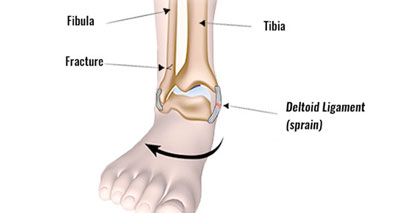
An eversion ankle sprain occurs when your ankle rolls inwards. It is much rarer than a normal ankle strain and is often accompanied with a fracture of the fibula bone.
More on Eversion ankle sprains.
Ankle sprain
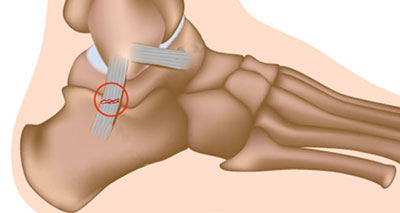
A converntional ankle sprain will likely cause most pain on the outside of the ankle. However, bruising of the bone on the inside of the ankle can also occur from compression.
More on Ankle sprains.
Ankle fractures
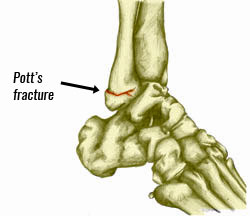
A ankle fracture is a break to any of the bones which make up the ankle joint. There are a number of different types of broken ankle with symptoms of severe pain and swelling.
More on Ankle fractures.
View all acute ankle injuries.
Medial ankle pain not to miss:
The following injuries do not commonly cause pain on the inside of the ankle, however, if missed, more serious long term damage may occur.
Navicular stress fracture
- Symptoms of a navicular stress fracture include a poorly localized ache in the midfoot which gets worse with exercise.
- Pain may radiate along the inside arch of the foot and goes away quickly with rest, only to return again as training resumes.
- Tenderness may be felt when the thumb is pressed into the top of the foot over the navicular bone, called the N spot.
Read more on Navicular stress fracture.
Ankle sprain complications
- Complications of ankle sprains and Complex regional pain syndrome should also not be overlooked.
Medial ankle pain rehab & exercises
We have the following rehab programs and exercises available:
Ankle sprain rehabilitation

Our Ankle sprain rehabilitation program is created by elite level Physio Phil Pask and takes you from initial injury to full fitness.
Taping for medial ankle pain
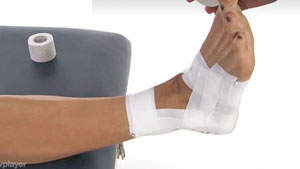
Learn how to apply sports taping techniques for ankle injuries.
References & further reading
- Rolf C, Guntner P, Ekenman I et al. Dislocation of the tibialis posterior tendon: diagnosis and treatment. J Foot Ankle Surg 1997;36(1):63–5.
- Brukner P, Bennell K, Matheson G. Stress Fractures. Melbourne: Blackwells Scientific Asia, 1999.
